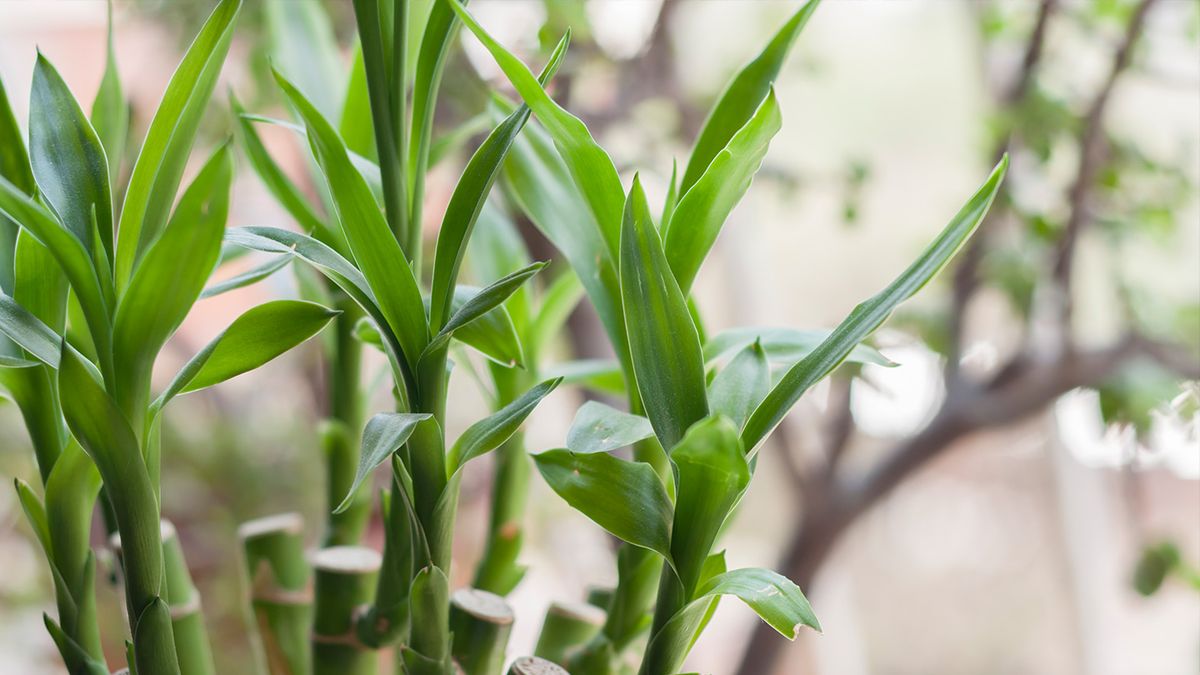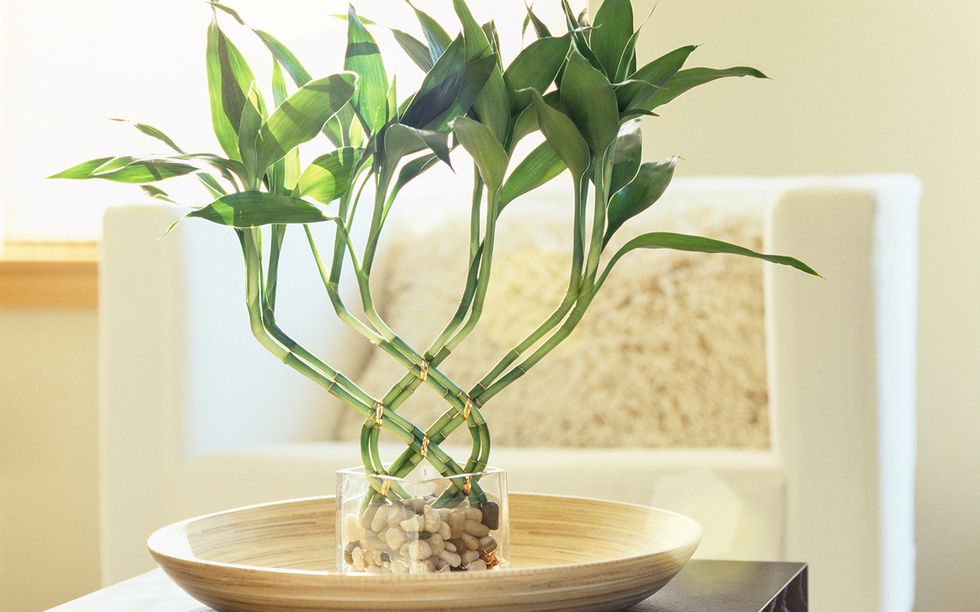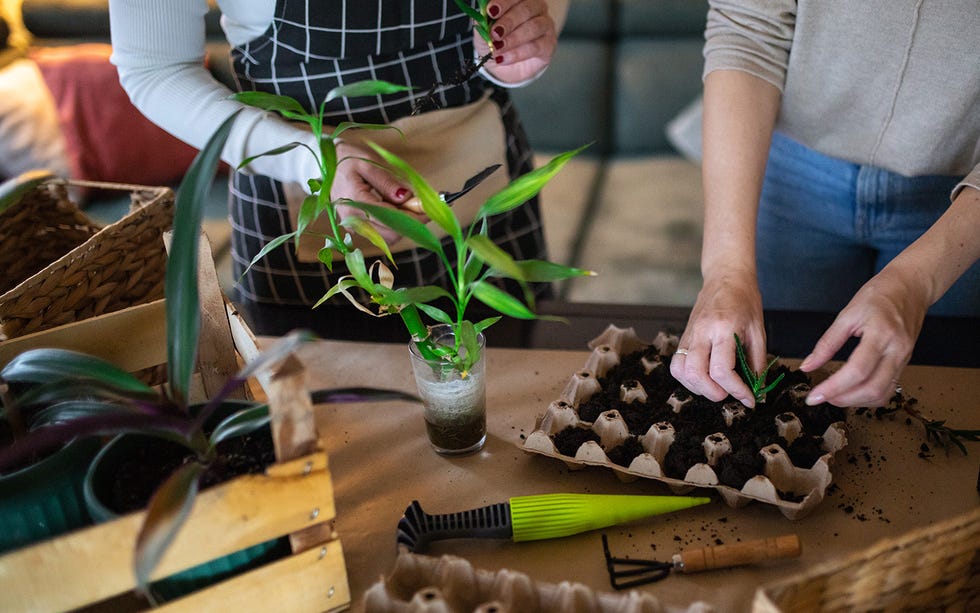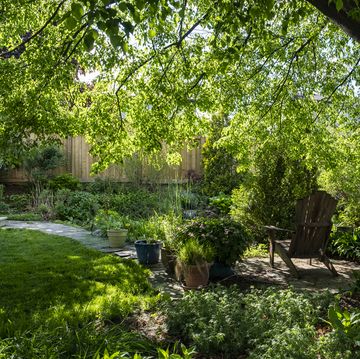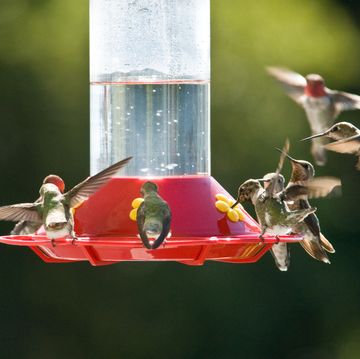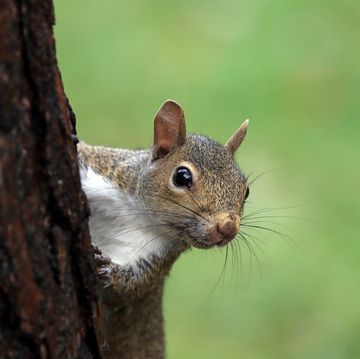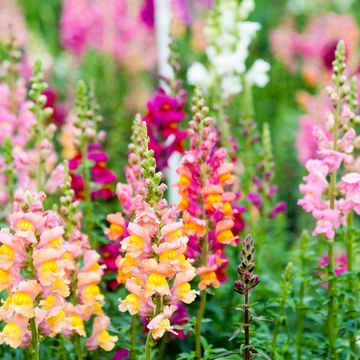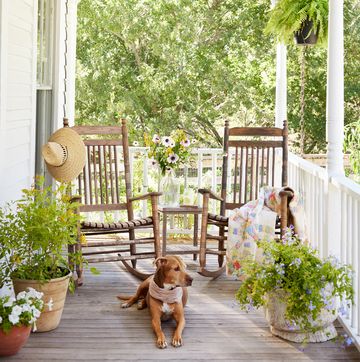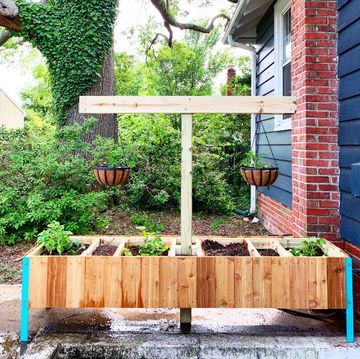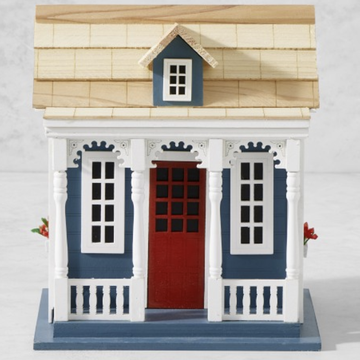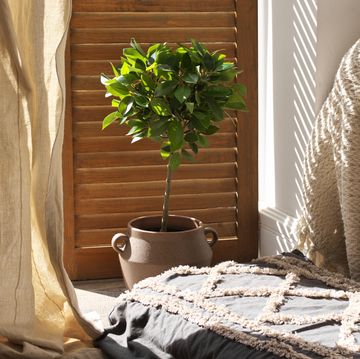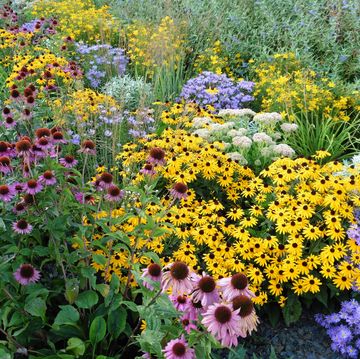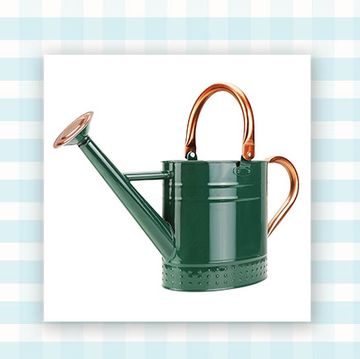Do you want to add a bit of prosperity to your collection of houseplants? Consider getting a charming lucky bamboo plant to two to your gracious spaces. It one of the few houseplants you (nearly) can’t kill! Despite its name, it’s not actually a bamboo at all. It's really cane cuttings from Dracaena sanderiana, a foliage plant that’s native found in tropical regions of Africa. The plant is actually in the asparagus family and the leaves are meticulously stripped off so that it resembles bamboo! In native areas, these plants can grow several feet tall outdoors. They’re usually sold about 8 to 10 inches tall inside a vase with pebbles and water to keep the plant upright. The stems can be guided through training methods to resemble braids, spirals, hearts and loops.
What's the meaning of lucky bamboo plants?
Traditional Chinese culture believes the number of lucky bamboo in an arrangement signifies its meaning.
- Two Stalks: love and marriage
- Three Stalks: happiness and positive vibes
- Four Stalks: In Chinese culture, the word for "four" is close to the word for "death." It can draw negative energy and is rarely used. It is viewed as extremely rude.
- Five Stalks: success or balance, peace, harmony, and power in all areas of your life.
- Six Stalks: good luck and wealth
- Seven Stalks: good health
- Eight Stalks: represent growth
- Nine Stalks: great luck
- Ten Stalks: perfection
- Twenty-one Stalks: an all powerful blessing
Here’s what else you need to know about lucky bamboo care.
All about lucky bamboo plants
- Botanical Name: Dracaena sanderiana
- Plant Family: Asparagaceae (the asparagus family, with 2,525 species)
- Common Names: Friendship Bamboo, Chinese Water Bamboo, Lucky Ribbon Plant, Water Bamboo
- Type of Plant: perennial shrub
- Origin: tropical western Africa
- Sun Exposure: moderate to bright indirect light
- Preferred Soil Type/pH Range: moist and well-drained / acidic
- Fertilizing Periods: once every 2 weeks during growing season and refrain during the winter
- Maturity Size: 1 to 5 feet tall and up to 2 feet wide indoors
- Blooming/Flower Color: rarely blooms indoors / small white flowers appear in clusters
- Hardiness Zone: 10 to 11 (USDA)
- Helpful Tidbits: The plant has low toxicity if ingested by animals and may induce vomiting. Keep plants out of the reach of pets.
How do I care for my lucky bamboo plant?
Indoors, give lucky bamboo low or medium indirect light, not direct sunlight, which can burn the leaves. The canes typically are submerged in plain water but also may be potted in soil. Lucky bamboo doesn’t like chemicals in tap water such as chlorine and fluoride, which will cause browning. Leave the water out overnight before using so the chlorine will evaporate. If there’s fluoride in your tap water, use filtered water. Change the water every week, and make sure it covers the roots completely. If algae forms, clean the container well before adding new water. If your lucky bamboo is planted in soil, keep it slightly moist.
Should I fertilize my lucky bamboo plant?
It’s not totally necessary, but it may help it stay healthy. If you’d like to feed it, add a liquid fertilizer at ¼ strength. But if you notice yellow leaves, stop fertilizing. Replace the water with distilled water. Sadly, if the stalks turn yellow, it’s probably too late for your plant to recover.
Can I make a new lucky bamboo plant?
As it gets older, your lucky bamboo plant may get leggy or scraggly. You can attempt to rejuvenate it by cutting the canes back to their original lengths. Or cut a piece 1 ½ to 2 inches long from a healthy stem and make sure it has at least one growth bud, a slight swelling under the soft bark of the stem. Place in water with pebbles or push directly into moist potting soil.
Lucky bamboo is toxic to pets.
Unfortunately, this cute little plant contains saponins, which are toxic to pets. If your cat or dog takes a nibble, they may experience vomiting (with blood), drooling, depression, and excess salivation. If you suspect your pet has taken a bite, call your vet ASAP.
FAQs about lucky bamboo plants
Q. Does lucky bamboo require direct sunlight?
Typically, the plants prefer partial shade or indirect sunlight with medium to low light conditions.
Q. Does lucky bamboo grow better in water or soil?
You can opt for either option but lucky bamboo will live longer in well watered and drained soil. Water grown plants typically live for a year and soil grown ones can live a few years.
Q. What's the best spot to place lucky bamboo?
Find a spot away from air conditioning or heating ventilation. with good in indirect sunlight.
..Arricca Elin SanSone has written about health and lifestyle topics for Prevention, Country Living, Woman's Day, and more. She’s passionate about gardening, baking, reading, and spending time with the people and dogs she loves.

Janece Maze is Associate Editor at Country Living, where she covers DIY projects, gardening, and travel. When she’s not in the kitchen creating a new recipe with farm fresh ingredients, you can find her on the road heading to a music festival or browsing a local consignment shop.
